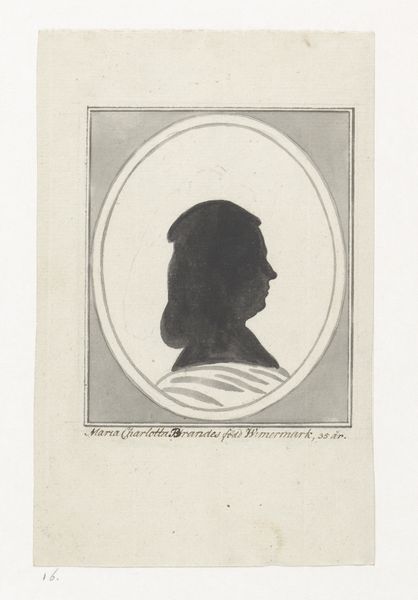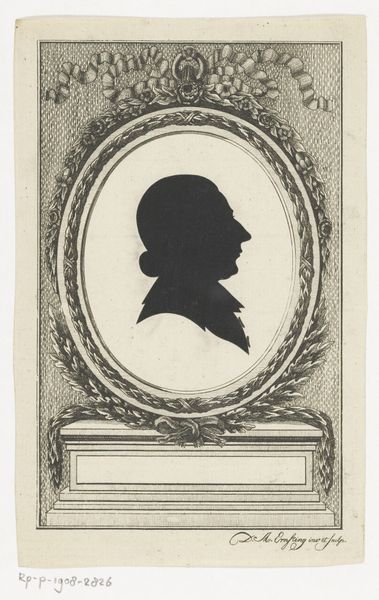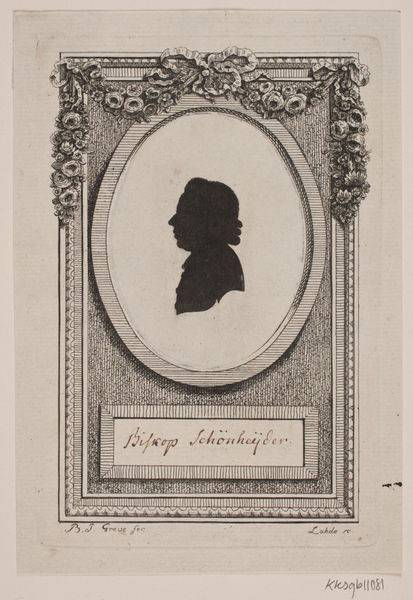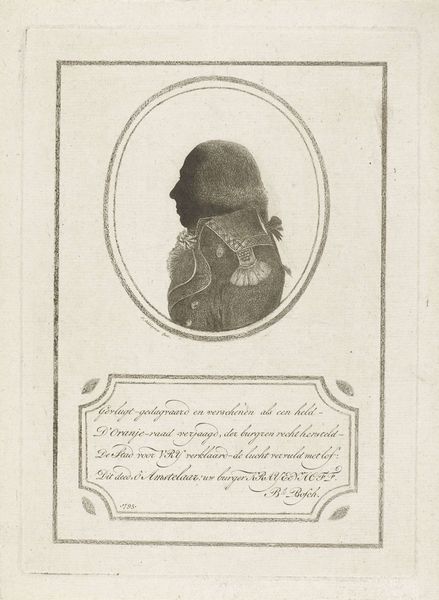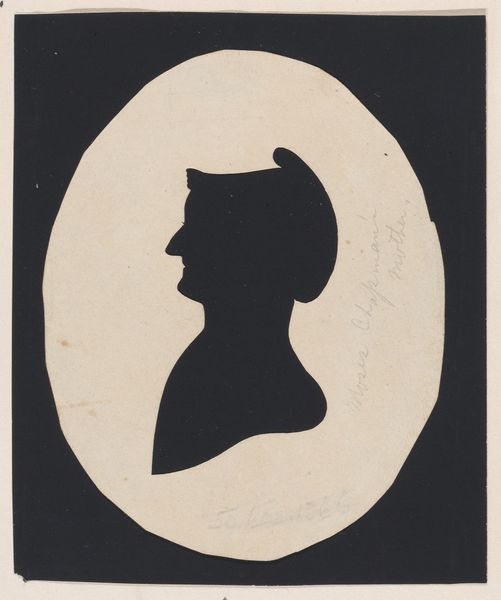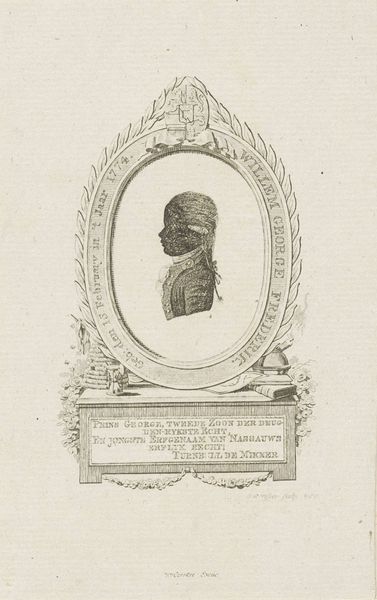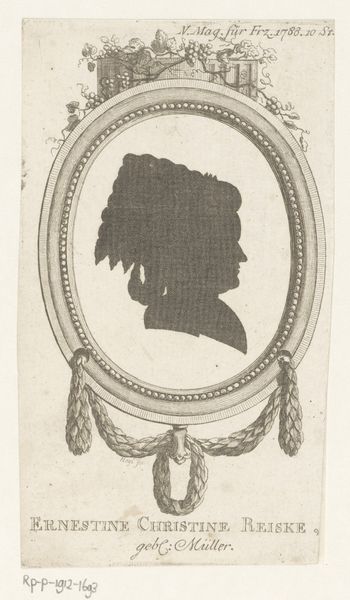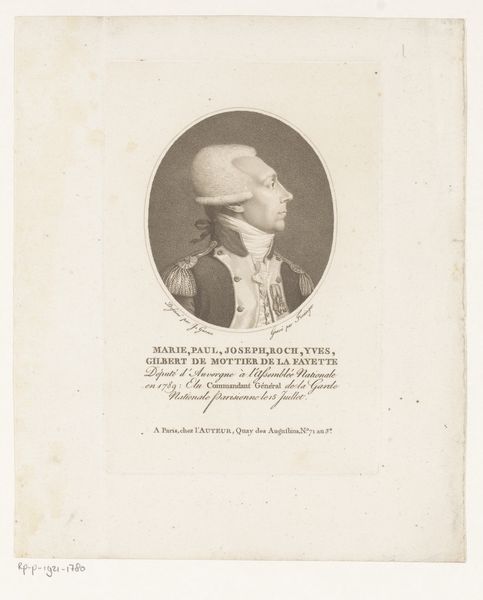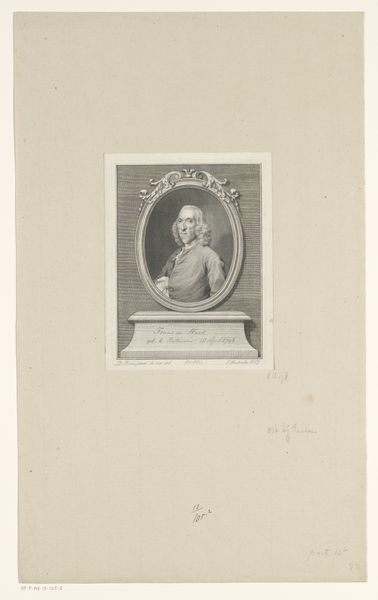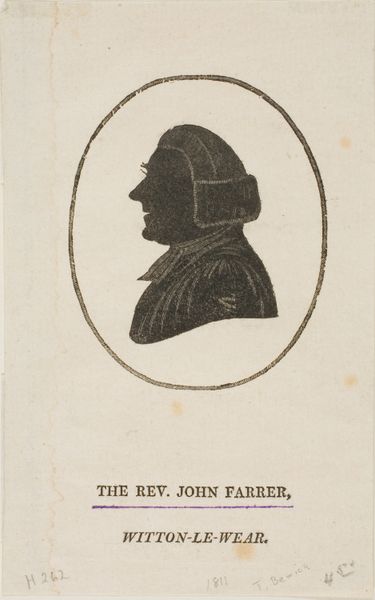
drawing, print, paper, ink
#
portrait
#
drawing
# print
#
old engraving style
#
paper
#
ink
#
romanticism
Dimensions: height 220 mm, width 168 mm
Copyright: Rijks Museum: Open Domain
Curator: Let's turn our attention to this intriguing silhouette portrait of Reverend Simon Brand. The print, dating from 1776-1849, is held here at the Rijksmuseum. It's an ink drawing on paper, characteristic of Romanticism. Editor: The first thing that strikes me is the stark contrast. This black figure against the plain paper gives it an immediate sense of formality and gravity. There's something undeniably austere about it, which seems fitting for a clergyman. Curator: Exactly, silhouette portraits gained popularity because they offered an accessible way to depict likeness, connecting the sitter with wider social aspirations through relatively inexpensive prints. How was this mode of representation used to reinforce societal ideas about piety, virtue, and authority, in your view? Editor: Well, the silhouette itself is telling. Reducing the person to a shadow invites contemplation of inner character, suggesting the unseen is as important as the seen. It's almost allegorical: the Reverend's profile becomes a vessel for projecting ideals of religious authority and moral uprightness. Curator: That’s a beautiful insight! Think about the role of paper, too: this everyday material becomes imbued with value through the printmaking process. In the context of the growing merchant class, owning prints like these offered access to status symbols through participation in a wider artistic culture. Editor: The inscription also contributes. Though I can’t read the original Dutch, its presence reinforces the idea of Brand as a virtuous, eloquent leader. Words become visual cues, amplifying the symbolic weight of the image and the social standing of the clergyman represented here. Curator: Precisely, from a material perspective, each impression reflects not just skill, but also a certain social mobility associated with representation and printed matter itself during that era. Editor: Absolutely, and seeing it through an iconographic lens allows us to interpret how seemingly simple visual elements work together to solidify memory and communicate complex messages about personhood. Curator: Thank you. Analyzing the materials and social history adds valuable nuance. Editor: Indeed, exploring symbolism and societal values makes it richer for me.
Comments
No comments
Be the first to comment and join the conversation on the ultimate creative platform.
